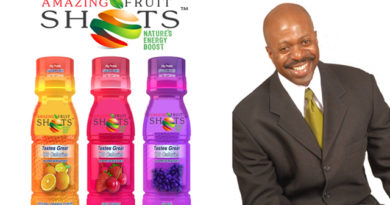An Ad Woman at the Top of an Industry
Carol H. Williams started working in the advertising business in 1969, when young African-American women like her were a rarity in the industry.
Once in those early years, she recalled recently, an older white woman she worked with remarked, apropos of nothing, “Don’t you think black people were much happier when they were slaves?”
“She said they were always singing and dancing,” Ms. Williams said. “I said, ‘You need to turn your television off,’ and she was stunned by that statement. I don’t know what she was expecting me to say.”
Ms. Williams, a creative mind behind major campaigns for brands like Secret, Pillsbury and the Walt Disney Company, said she had simply walked away and limited the woman’s access to her after that.
“She wasn’t going to get me distracted with that ignorance and irrelevance where I couldn’t do my job or get focused,” Ms. Williams said. “There is no re-education for that kind of nonsense.”

The American workplace and the ad industry have evolved strikingly since then, but perhaps not fast enough. On Tuesday evening, Ms. Williams will be the first African-American woman with a creative agency background — the class of executives exalted on “Mad Men” — to be inducted into the Advertising Hall of Fame, which was established in 1948.
Ms. Williams, the founder of Carol H. Williams Advertising, got her start at Leo Burnett in Chicago. There she coined the tagline for Secret deodorant — “Strong enough for a man, but made for a woman” — and helped sell Americans on Pillsbury canned frosting back when the boxed version was in vogue.
Her induction comes as Madison Avenue continues to grapple with a lack of women and minorities in its top ranks and faces intensifying pressure to diversify from advocacy groups, major brands and its own leaders.
The 3% Conference, which supports female creative leadership at agencies, has estimated that only 11 percent of creative directors are women, even as they account for half of the industry’s work force. For black women, the field is even tougher: Last month, the Interpublic Group publicized statistics from the Equal Employment Opportunity Commission showing that fewer than 1 percent of executives in advertising, public relations and related services are black women.
“When you consider someone like Carol Williams could come up and be African-American and a woman and come to a place where she is inducted into the Advertising Hall of Fame, that accomplishment cannot be understated,” said Judy F. Davis, a professor of marketing at Eastern Michigan University and author of the book “Pioneering African-American Women in the Advertising Business.” “It’s an important symbol in terms of the history of the advertising business.”
(The Hall of Fame, which is administered by the American Advertising Federation, inducted its first African-American woman two years ago: Catherine L. Hughes, the founder of Radio One, the country’s largest black-controlled multimedia company.)
Ms. Williams, who is in her late 60s, said she had initially been hired by Rudolph Perz, the creator of the Pillsbury Doughboy. She was behind the campaign “Say Hello to Poppin’ Fresh Dough” — the Doughboy’s name — and created his female counterpart, Little Poppy, who was not subject to the famous giggle-inducing belly pokes that Poppin’ Fresh endured. (The decision, she recalled, followed “a huge discussion,” with the team ultimately deciding it was abusive to poke Little Poppy because she was a young girl.)
Ms. Williams eventually became the first woman to be a creative director at Leo Burnett, but her career was not without challenges. She learned to ignore or detach herself from situations where men would say culturally “unacceptable” things, she said, and advanced without having a female boss or peer “to derive mentorship from.”
It was a challenge, for example, to balance a demanding workaholic culture with the need to pick up her daughter, who is also named Carol, from school on time, she said.
The environment drove her to create work that led to tangible results for brands, she said. A campaign for Pillsbury relied on a paper knife to highlight the texture of its canned frosting, a stunt that changed many Americans’ perception of the product. Before her work with Secret, she said, “women were perceived as soft, delicate creatures that didn’t sweat.”
“In those days, I saw people would execute a project because they enjoyed executing the project and the project was just that to them,” she said. “Whereas when I would execute a project, it impacted the bottom line.”
She left Leo Burnett in the early 1980s and started her own agency in Oakland, Calif., in 1986. The agency, which has just under 40 employees and locations in Chicago and New York as well as Oakland, has created campaigns for brands including Wells Fargo, Buick, the United States Army and Disney, for which it made the popular “Signs” commercial in 2007, featuring a boy using sign language to communicate with his grandfather.
Ms. Williams said the industry still had work to do in connecting with African-Americans. She is concerned that agencies catering to multicultural audiences employ mass marketing strategies that look to target such consumers simply by casting minorities in ads, or making assumptions based on social media data.
“It becomes an issue of, ‘If they see themselves in a commercial, they’ll buy the product,’ rather than it being about the messaging and how that messaging is delivered to them,” she said.
Some companies are also using digital technology to “withdraw what they perceive as insights out of these communities,” she added, instead of “developing research techniques to really get to know this culture.”
Her comments seemed particularly notable in the wake of a widely derided commercial from Pepsi, which invoked imagery from the Black Lives Matter movement. Ms. Davis, the professor, said it was “very interesting” to see that sort of ad, almost 50 years after another African-American ad executive, Barbara Gardner Proctor, was fired from an agency for refusing to work on a hair product ad that sought to mimic a civil-rights protest.
About the Pepsi ad, which was made in house, Ms. Davis said, “It has been suggested, and I certainly agree with the sentiment, that if people of color perhaps had been at the table when the execution was conceived, perhaps there would have been input from that level that would have suggested maybe this wasn’t a good idea.”
She said that was just the latest example of how much work the ad industry still had to do, despite Ms. Williams’s induction.
“If you’re asking me if next month or next year, agencies are going to start to say, ‘Hey, I think we need to really start bringing in more African-American women,’ I really don’t think it’s a turning point in that regard,” she said. “There are a lot of cultural changes that need to happen within the corporate agency climate in order for that to occur.”
“But,” she added, “I do think it signifies that there are African-Americans and African-American women who are competitive in this space and can deliver.”


